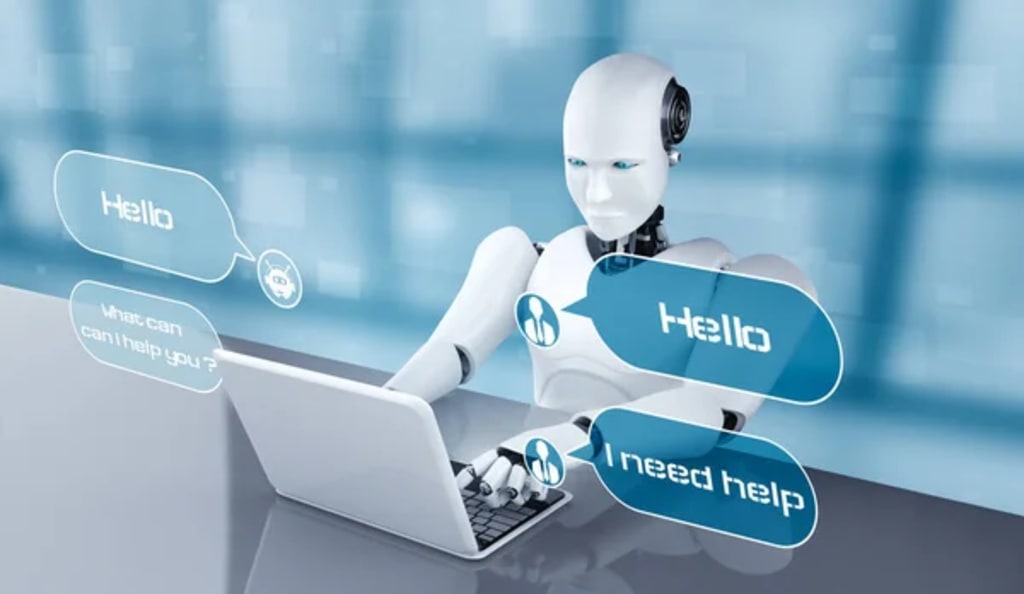Unleashing the Power of Chatbots: Revolutionizing Customer Experience and Business Efficiency
Harnessing Artificial Intelligence to Enhance Customer Interactions and Drive Operational Success

Intro..
In today's digital era, businesses strive to deliver exceptional customer experiences while maintaining operational efficiency. To achieve this, many organizations are turning to chatbots, an advanced form of artificial intelligence (AI) technology. Chatbots are intelligent virtual assistants capable of engaging in human-like conversations, automating tasks, and providing round-the-clock support. In this blog post, we will explore the transformative potential of chatbots, their benefits, use cases, limitations, and best practices for successful implementation, offering insights into how these conversational agents are reshaping customer interactions and driving business growth.
I. Understanding Chatbots
A. Defining Chatbots: A chatbot is an AI-powered software application designed to interact with humans through textual or auditory means, simulating human conversation. They leverage natural language processing (NLP) algorithms to understand user input, interpret queries, and provide relevant responses.
B. Types of Chatbots: Chatbots can be broadly categorized into two types: rule-based chatbots and AI-powered chatbots. Rule-based chatbots follow predefined rules and have limited capabilities, while AI-powered chatbots use machine learning algorithms to learn from data and provide more dynamic and personalized interactions.
C. Chatbot Applications: Chatbots find applications in various industries, including customer service, e-commerce, healthcare, finance, and more. They can assist with tasks such as answering FAQs, product recommendations, order tracking, appointment scheduling, and troubleshooting.
II. Benefits of Chatbots
A. Enhanced Customer Service and Support
1. 24/7 Availability: Unlike human agents with limited working hours, chatbots are available round the clock, providing instant support and resolving customer queries at any time.
2. Instant Response Time: Chatbots can handle multiple customer inquiries simultaneously, ensuring prompt and efficient responses without any delays or long wait times.
3. Personalized Interactions: Through AI algorithms and data analysis, chatbots can deliver personalized recommendations, tailored responses, and customized experiences based on user preferences and historical data.
B. Increased Efficiency and Productivity
1. Handling High Volumes of Inquiries: Chatbots excel at managing large volumes of customer inquiries, eliminating the limitations of human agents and ensuring smooth customer experiences during peak times.
2. Automating Repetitive Tasks: Chatbots can automate routine and repetitive tasks, such as order processing, FAQs, and basic troubleshooting. This frees up human agents to focus on complex issues, improving overall productivity.
3. Scalability: Chatbots can effortlessly scale their operations to handle increased traffic, without requiring additional resources. They can handle thousands of interactions simultaneously, providing consistent and efficient support.
C. Cost Reduction and ROI
1. Decreased Support Costs: By automating customer interactions, chatbots reduce the need for a large customer support team, resulting in cost savings for businesses.
2. Improved Conversion Rates: Chatbots can guide customers through the sales funnel, providing real-time product information, recommendations, and personalized offers, leading to higher conversion rates and increased revenue.
3. Long-term Cost Savings: Chatbots require initial investment but have lower maintenance costs compared to human agents. Once implemented, they can serve as a cost-effective long-term solution for customer support and engagement.
III. Drawbacks and Limitations of Chatbots
A. Limitations in Natural Language Processing (NLP)
1. Misunderstandings and Misinterpretations: Chatbots may struggle with understanding complex queries, idioms, or slang, leading to inaccurate or irrelevant responses.
2. Difficulty Handling Complex Queries: While chatbots excel at handling simple and common inquiries, they may struggle with complex scenarios that require human intervention or deeper domain knowledge.
3. Language and Cultural Barriers: Chatbots may face challenges in understanding and responding to different languages or cultural nuances, limiting their effectiveness in diverse customer bases.
B. Lack of Human Touch and Emotional Connection
1. Inability to Display Empathy: Chatbots lack human emotions and empathy, which can sometimes be crucial in sensitive customer interactions or situations requiring emotional support.
2. Frustration with Automated Responses: Customers may feel frustrated or dissatisfied when they receive automated responses that do not address their specific concerns or fail to provide a human-like conversational experience.
3. Challenging Situations Requiring Human Intervention: Some complex scenarios or unique customer situations may require human intervention, as chatbots have limitations in handling exceptions, resolving intricate issues, or providing subjective judgment.
C. Potential Security and Privacy Risks
1. Data Breaches and Confidentiality: Chatbots process and store vast amounts of user data, making them potential targets for cyberattacks and data breaches. Organizations must implement robust security measures to protect sensitive customer information.
2. Vulnerabilities in AI Algorithms: As chatbots rely on AI algorithms, they may be susceptible to biases, errors, or malicious manipulation if not properly designed, tested, and monitored.
3. Maintaining Compliance with Regulations: Organizations must ensure that chatbot interactions comply with privacy regulations and data protection laws, such as GDPR or CCPA, to safeguard customer privacy and maintain legal compliance.
IV. Prevention Measures for Effective Chatbot Implementation
A. Robust Training and Testing
1. Quality Data for Training: Chatbots require high-quality training data to improve their language understanding and response generation. Organizations should curate diverse and relevant datasets for training and continuously refine the models.
2. Continuous Iteration and Improvement: Regular monitoring, analysis of chatbot performance, and iterative model updates are essential to address limitations, enhance accuracy, and refine the conversational capabilities of chatbots.
3. User Feedback and Monitoring: Gathering feedback from users and tracking performance metrics can help identify areas for improvement, enhance user experience, and uncover potential issues or gaps in chatbot functionality.
B. Hybrid Approach - Human-Assisted Chatbots
1. Seamless Handover to Human Agents: Implementing a seamless handover process from chatbots to human agents ensures a smooth transition for complex queries or situations that require human expertise.
2. Complex Query Escalation: Chatbots can be programmed to identify scenarios beyond their capabilities and prompt users to connect with human agents for specialized assistance, ensuring accurate problem-solving and customer satisfaction.
3. Maintaining the Human Touch: Incorporating elements of personalization, empathy, and human-like responses within chatbot interactions can bridge the gap between automated assistance and human interaction, improving customer experience.
C. Security and Privacy Measures
1. Encryption and Secure Data Handling: Implementing robust encryption protocols and secure data storage practices ensure the confidentiality and integrity of customer information during chatbot interactions.
2. Compliance with Data Protection Laws: Organizations should adhere to relevant data protection regulations and industry standards to maintain customer trust, privacy, and legal compliance.
3. Regular Audits and Vulnerability Assessments: Conducting periodic security audits, vulnerability assessments, and penetration testing helps identify and address potential vulnerabilities in chatbot systems, reducing the risk of data breaches.
V. summary
Chatbots have emerged as powerful tools for businesses, revolutionizing customer service and operational efficiency. While they offer numerous benefits such as enhanced customer support, increased productivity, and cost savings, they also have limitations that organizations must address. By implementing prevention measures like robust training, human-assisted approaches, and strong security measures, organizations can maximize the potential of chatbots while mitigating drawbacks. As chatbot technology continues to evolve, the future holds great promise for even more sophisticated and personalized customer experiences, reshaping the way businesses engage with their customers in the digital landscape.
About the Creator
Enjoyed the story? Support the Creator.
Subscribe for free to receive all their stories in your feed. You could also pledge your support or give them a one-off tip, letting them know you appreciate their work.






Comments
There are no comments for this story
Be the first to respond and start the conversation.